#Tiling
Explore tagged Tumblr posts
Text

Ghost tiling. Inspired by this post: https://www.facebook.com/groups/tiling/permalink/2108516502905217/
39 notes
·
View notes
Text
Inspired by this post by @thanergetic-hyperlinks, I present to you
Tessellations of the Nine Houses
(Or "I can't really draw figurative art so my Locked Tomb fanarts are geometrical vector drawings")
"A tessellation or tiling is the covering of a surface, often a plane, using one or more geometric shapes, called tiles, with no overlaps and no gaps." — Wikipedia.
Making tilings themed after each necromantic House seems obvious: for each House you pick a tile with the same number of sides as the number of the House; but this does present some challenges for some of the Houses.
note 1: this might give the impression that I first decided on the symbols and then found patterns to match them in a very organized and motivated manner; in practice it was much more chaotic and multidirectional, the patterns informing the symbols as much as the symbols informed the patterns; this is fine since symbolism is entirely associative and arbitrary anyway
note 2: I added alt-texts for all the images, but I have no idea of how to properly describe abstract geometric art; if you feel you can do a better job than I did, feel free to put your fingers where your mouth is--wait, hang on-- I mean feel free to provide better descriptions if you can
note 3: looking forward to the geometry nerds explaining to me how I got basic geometric details wrong, friggin nerds
The First House
The First House seems obvious, as a shape with one side is an ellipse (of which the circle is a special case). There's just one problem: ellipses do not tile the plane. No matter how much you stretch them and deform them, the very nature of ellipses means you'll always have gaps or overlaps.
So we cheat and we work with overlaps: turns out there is a history of tilings that use circles as a construction pattern, then turn the overlapping sections into the actual tiles. Such patterns have been used extensively in European and Middle Eastern art, and have also been associated with the New Age movement, so it fits Jod's style perfectly. And so we get this:

The different cells correspond to different House colors, with the resulting gothic stained-glass appearance quite in line with the Roman Catholic Empire vibe Jod is going for. The overlapping circles convey the intricacy of the relation between the First House and the eight other, both autonomous from it yet intrinsically part of it.
The Second House
There's a variety of geometrical shapes that have two sides, but most of them don't tile the plane, altho there is one that does — if we take a crescent shape and slightly thicken it so that the inner and outer curves are identical, we can do this:

The waving pattern is of course evocative of the flag of conquest which the Cohorts of the Second House have planted on many worlds.
The Third House
With the Third House things get a lot easier, because equilateral triangles are one of the three regular polygons (where all sides are the same length and all angles are identical) that tile the plane all by themselves without needing any other shape! Which however doesn't mean we have to be boring; we can have a little bit of fun:

Flowers for the beauty and ionizing radiation warning signs for the rancid vibes.
The Fourth House
Squares are the second regular polygons that tile the plane by themselves, so again our job is easy here, altho we still want to not go for the easiest option in order to be able to work in some symbolism:

The four big navy squares with a small white square at the center of course evoke the number five and the shadow of the Fifth House's regency over the Fourth.
The Fifth House
Regular pentagons do not tile the plane, so we have to use a more unusual shape — there are many options, but obviously we want to again pick one that offers some interesting numerical symbolism:

The cross-like patterns of course bring up the number four and the hold of the Fifth House over the Fourth. As for the crosses themselves and the fact that they appear to be made of wooden stakes, well uh… Abigail Pent, Vampire Hunter??? She does have Van Helsing vibes.
The Sixth House
Hexagons are the third and last regular polygons that tile the plane on their own. But this is the Sixth House we're talking about, things need to look orderly but in a convoluted way. So how about multiple levels of recursion:

The apparent complexity of the pattern is created by different orientations of a small number of elements, either 3 irregular hexagons, or 1 patterned regular hexagonal tile, depending on how you look at it, in line with the kind of hermetic scientism one imagines the Sixth House indulges in. The result is those apparent three-dimensional elements and emerging higher-order patterns, including that of ꙮ, the Multiocular O found in exactly one word of one 15th century Old Church Slavonic translation of the Book of Psalms ("серафими многоꙮчитїй" many-eyed seraphim).
The Seventh House
Regular heptagons do not tile the plane, but they don't need much tweaking to work, which is fine since for the Seventh House we want something deceptive yet simple (deceptively simple? deceptive in its simplicity?):

Hearts for the beauty, snake scales for the poison [the Seventh House is on Venus, the planet named after the Roman Goddess of love, but etymologically "Venus" is actually the same root as "venom", and of course "Septimus" resembles "septic" — tho in that case there's no etymological connection, it's just a happy coincidence].
The Eighth House
Octagons do not tile the plane, but they come pretty close, so we can give the Eighth House a simple, stern, but slightly threatening pattern:

Boring sterile bleached temple mosaic, with just a little bit of passive-agression, a perfect fit for Evangelical Christians Tumblr puritans the Eighth House.
The Ninth House
And so we reach the Ninth House. Now the thing about the Ninth House is that, even by imperial standards, they're huge freaks, like they're completely unhinged heretical weirdoes. So, when it comes to their tiling, we need to get weird, like, a lot weirder than we've been so far, and this will require some context, so get ready because now we're officially going on a wild tangent.
So far all the tilings we've seen were periodic. That is, they were drawing a pattern that repeats itself indefinitely in all directions.
But starting in the 1960s, mathematicians began to study aperiodic tilings, tilings that don't repeat; you can keep expanding them forever and never exactly find back the original pattern you started with. The first mathematical proof of such a pattern was made in 1964 and theoretically required 20,426 distinct tile prototypes… This was soon refined to just 104 tile prototypes, then a mere 40. By 1971, it was mathematically demonstrated that you could make such a pattern with just 6 tile prototypes.
Except that was a lie.
Note that I said mathematically demonstrated. As it turns out there was an aperiodic pattern with just 5 tile prototypes, known as Girih, that had been used in Islamic art… since at least the 13th century — but it had historically been treated merely as an element of architectural design, and its mathematical properties weren't studied until 2007.
Then in 1973 this guy Penrose came along and demonstrated you could make an aperiodic tiling with just 2 tile prototypes. So now the goal was to find the ultimate aperiodic tiling, the one that would use only one tile prototype. Given how fast the field had progressed so far, it seemed that this discovery was imminent.
It took 50 years.
Not only that, but it was the work of amateur mathematician David Smith who accidentally discovered a 13-sided polygon that could make an aperiodic tiling all by itself (he then had his discovery checked by and co-authored a paper with a number of professional mathematicians).
EXCEPT THAT WAS A LIE AGAIN.
In turns out an aperiodic tiling using only one tile prototype had already been found… in 1936. But since the study of aperiodic tilings only started in the 60s, its significance in that domain wasn't understood at the time. It was seen as significant, but for an entirely unrelated reason: it was the first demonstration of a polygonal shape that needed only two copies of itself to completely enclose the original one — many mathematicians before that point thought the minimum possible was 3 (think of the Triforce from Zelda, with one equilateral triangle completely enclosed between three other identical triangles).
And coincidently, that shape happens to be a highly-irregular nonagon [yes "enneagon" is """technically""" more correct but "nonagon" has been used since the 17th century and is more common and it has Nona in it and Nona loves you]. So here it is, the Voderberg tiling, the freakish freakish tessellation of the Ninth House:

Like you see this and you're like "what is this, what is that thing, that's not a tiling, what the fuck is that" — but it is, it is a tiling, you can keep adding the freaky polygon and it keeps expanding outward forever, with no gap, no overlap, and with an ever-changing pattern. A double-spiral radiating outward, for Anastasia and Samael, Anastasia and Alecto, Alecto and Harrowhark, Harrowhark and Gideon.
And if you were thinking that this last one must have been significantly harder to draw than the other ones, you would be correct.
421 notes
·
View notes
Text
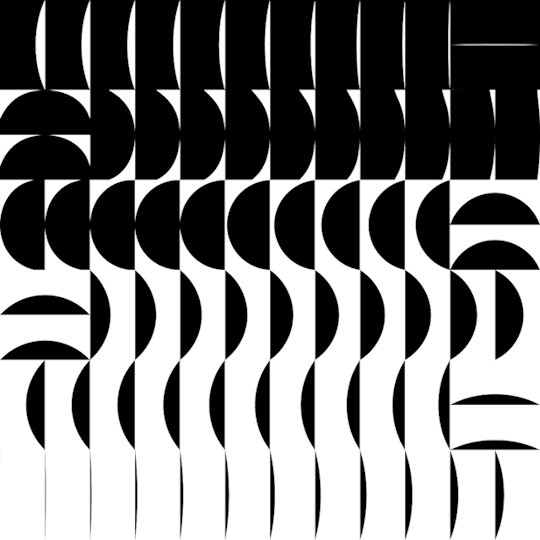
◗ Semi Circle Snake Tile ◖
#loop#seamless#visuals#after effects#motion#geometry#hypnotic#opart#op art#black and white#monochrome#pattern#tiling#artists on tumblr#circle#rectangle
117 notes
·
View notes
Text

The DUNGEON MAP TILES
Building a 2MT-style dungeon has never been easier! Please try our new map tiles and let us know what you think. :)
→ Find them here!
#ttrpg#tabletop#dungeons and dragons#dnd#dungeons & dragons#d&d#d&d5e#pathfinder#gurps#rpg#top-down#battle map#map#cartography#encounter#dungeon#stone#underground#modular#geomorph#tiling#tiles#seamless#custom
96 notes
·
View notes
Text
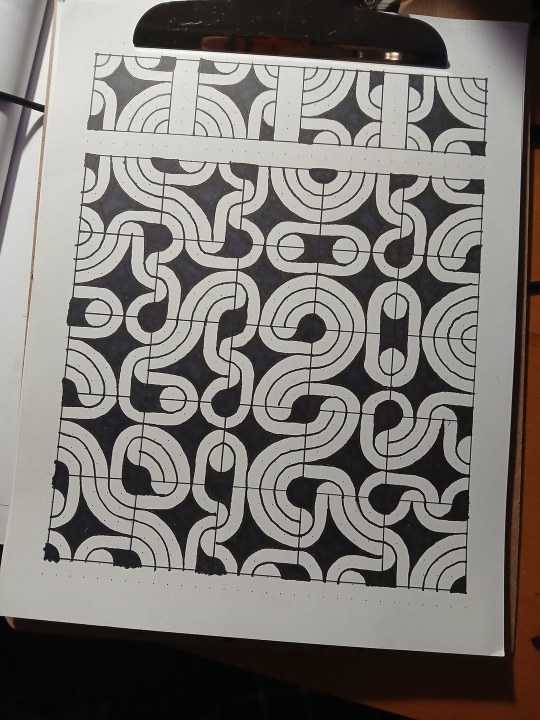
One Tile
Chuck Stephens shared to FB. "Top of the page shows four rotations of the tile. I drew a 5x5 grid and rolled a four sided die to determine which rotation went where."
40 notes
·
View notes
Text

source
28 notes
·
View notes
Text



Almost finished the minimum viable product for the Penrose blanket and fallen in love with The Shape so I’ve reworked the pattern to maximise the amount of The Shape I can fit.
EDIT:
then I actually got the MVP out and on the floor for the first time in a while


…. I don’t need to do another two layers it’s big enough to sit on already ! So let’s cut that idea down again

I’ll start with the smallest and decide if that’s wide enough once it’s all sewn together.
#cotton khaleesi#cottonkhaleesi#Penrose blanket#knitting#green#teal#copper#tiling#geometric#geometric tiling
20 notes
·
View notes
Text
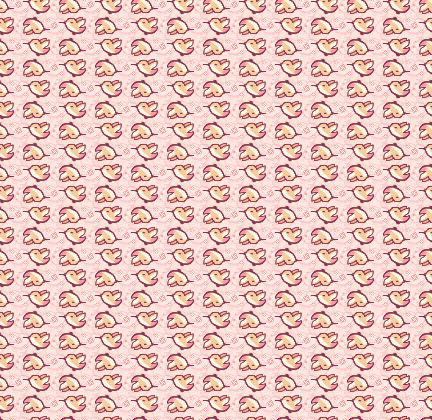
sometimes the solution to artblock is drawing something very, very small and very, very quickly.
#art#artists on tumblr#digital art#my art#cute art#cute#pink#pastel colors#pink art#hummingbird#simple art#tiling#pattern
16 notes
·
View notes
Text
⭐️⭐️star backgrounds✨⭐️✨✨⋆˙⟡♡✧˖°
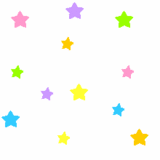





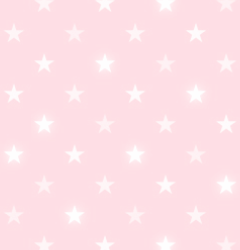

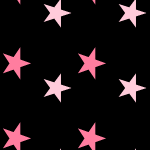
dont reccomend using the flashy ones for website backgrounds.....
#graphicz#fav#eyestrain#background#repeating#repeating pattern#webcore#tiling#tiled background#kidcore#rainbow
136 notes
·
View notes
Text


Two spiral tilings. Inspired by https://www.facebook.com/groups/tiling/permalink/2108516502905217/
98 notes
·
View notes
Text

TilingSpartanTexture.png
22 notes
·
View notes
Text
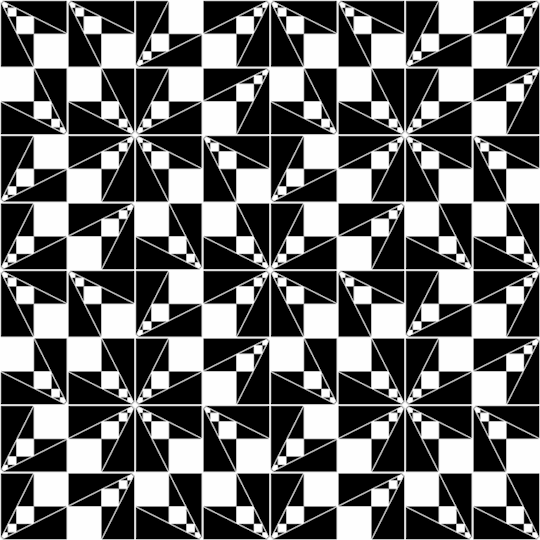
Small things grow reaching up to match the vast. Cliffs look steeper when you only see the climb. Anxiety whispers when structures expand, Lines converge if scaled properly. Every giant shrinks when you look it in the eye. inspired by Michael Helso
#scale#op art#pattern#motion#2d animation#tiling#loop#vj#gif#geometry#monochrome#black and white#repetition#artists on tumblr
115 notes
·
View notes
Text







Homerton College Dining Hall, Cambridge - Fielden Fowles
#Fielden Fowles#architecture#modern#modern architecture#interiors#building#design#cool architecture#design blog#beautiful buildings#university#dining hall#timber frame#stone#tiling#colour#cambridge#uk#british architecture#light#wall tiles#roof trusses#clerestory windows#food hall#blue and green#colourful#beautiful design#pitched roof#courtyard
79 notes
·
View notes
Text
How to Choose the Right Tiling Services in Brisbane: Expert Tips from Brisy Tiling QLD

Introduction:
Enhancing your home's aesthetics and functionality often starts with quality tiling. Whether you're renovating your kitchen, updating your floors, or adding a stylish splashback, selecting the right tiling services is crucial. Brisy Tiling QLD, a trusted name in Brisbane's tiling industry, offers expert solutions tailored to your needs.
1. Assess Your Tiling Needs
Begin by identifying the areas requiring tiling and the type of tiles suitable for each space.
Kitchen Tiling: Opt for durable and stain-resistant tiles like porcelain or ceramic to withstand cooking spills and high foot traffic.
Tile Flooring: Consider materials such as slate, marble, or laminate for living areas, balancing aesthetics with durability.
Vinyl Flooring: Ideal for bathrooms and kitchens, vinyl offers water resistance and a variety of design options.
Kitchen Splashbacks: Protect your walls from splashes while adding a design element; glass or mosaic tiles are popular choices.
2. Evaluate Experience and Expertise
Choose a tiling company with a proven track record. Brisy Tiling QLD boasts over 35 years of experience, having installed flooring in more than 750,000 homes and apartments. Their expertise spans various materials, including ceramic, terracotta, granite, marble, glass, and natural stones.
3. Consider Material Selection
The choice of materials impacts both the look and longevity of your tiling. Brisy Tiling QLD offers a diverse range of options:
Laminate: Cost-effective and easy to maintain.
Ceramic and Porcelain: Durable and available in various designs.
Natural Stones: Such as marble and granite, offering a luxurious finish.
4. Request a Detailed Quote
Transparency in pricing is essential. Brisy Tiling QLD provides comprehensive quotes, outlining all costs involved, ensuring no hidden surprises.
5. Check Reviews and Testimonials
Customer feedback offers insights into a company's reliability and service quality. Brisy Tiling QLD has garnered positive reviews for their professionalism and attention to detail.
Conclusion:
Selecting the right tiling services in Brisbane involves careful consideration of your project needs, the company's experience, material options, pricing transparency, and customer feedback. Brisy Tiling QLD stands out as a trusted provider, delivering exceptional tiling solutions tailored to your requirements.
For more information or to request a quote, visit Brisy Tiling QLD.
3 notes
·
View notes
Text
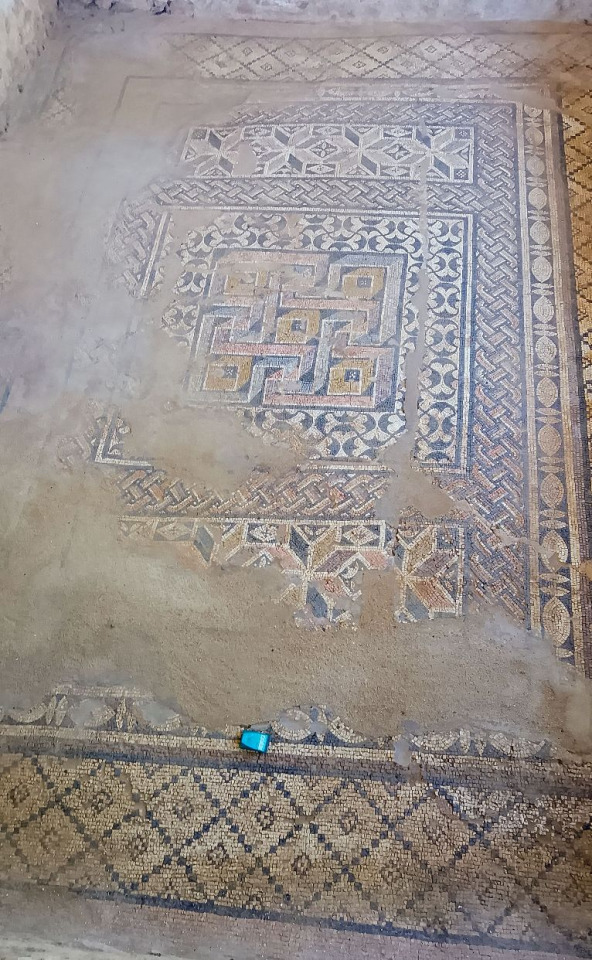
Greek Tiling
David Houlton ·on FB: "Just photographed Ancient Greek Geometrica Tessellations from 2000 years ago in Skala on the island of Kephalonia!"
11 notes
·
View notes